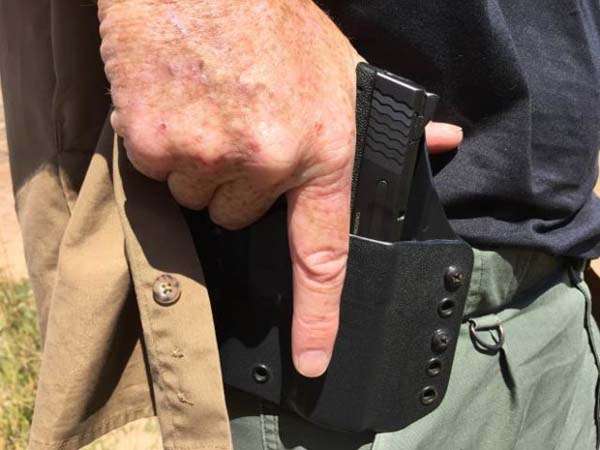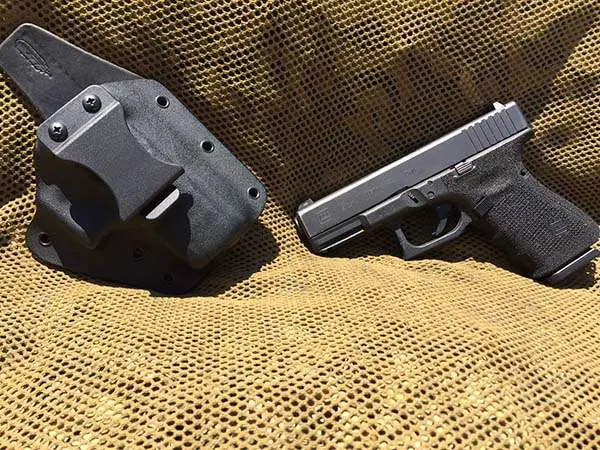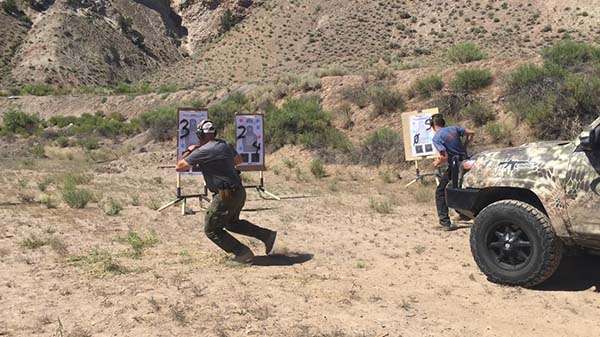
When training new shooters, especially those new to concealed carry or rookie law enforcement officers, I always provide a solid foundation of basic marksmanship.
There is, however, another critical element of preparedness and training for those relying on a firearm for defensive purposes. When I started out many years ago in a law enforcement career, my training sergeant left me with a quote I will never forget: “Don’t let your equipment defeat you.” I find myself constantly using that doctrine still today, for both myself and students. It applies today more than ever due to the constant new choices and technology for all firearms-related gear.
So what exactly am I referring to? Simply put, do not allow your selection of equipment be a hurdle to success in defending yourself. Tools must be deployed effectively and quickly when your life or the lives of others are at risk. If the gear you utilize for concealed carry impedes your ability to respond and deploy accurate fire…then that gear may in fact defeat you.
The following are areas where I regularly see students struggling with their concealed carry gear.
1. The handgun itself:

How may your handgun defeat you? Not a good fit for your hand. Too many added features that interfere with reliable operation. Safety and de-cocker mechanisms that the shooter cannot manipulate well, especially under stress. Sights that are barely visible. A magazine release that won’t allow for mags to drop free and clear when an emergency reload s needed.
The choices are endless. Caliber, make and model, single or double stack magazines to name a few. Not to mention the add-ons…night sights, red dot sights, laser, extended mag or slide release, etc. To me, the simpler and more reliable the better! Don’t get me wrong, I like some added features such as night sights….but I can live without most.
Bottom line: Does the handgun go “bang” every time you need it to? Does it have reasonable accuracy? Does it function well with all brands and types of ammo? Are the sights easily visible and highly functional? Is it easy to operate without lots of unnecessary manipulation? Can I shoot the gun well and do I have confidence in it and my ability and training?
Check out this list of great 9mm guns to get you on the right track.
2. Magazines:

How may your magazines defeat you? Not feeding ammunition properly, not allowing the slide to lock back, and possibly interfering with ejection/extraction. Again, to mention but a few!
I like to address the magazine separately because it is critical to proper functioning. My suggestion, use good factory made magazines for your defensive pistol, and test them! There are some excellent aftermarket mags for certain handgun platforms. But day in and day out, I use original factory mags for everyday carry.
After hard use in training you may want to consider having a second set of mags for every day carry. Inspect your mags and never hesitate to replace if needed. Also consider carrying a spare magazine for your carry pistol. Something I rarely see CC folks do.
Revolver carriers must make sure that their speed loaders and/or speed strips match the revolver they carry.
3. Ammunition:

How may ammunition defeat you? There are two ways–not cycling in your handgun of choice, or not firing when you pull the trigger. There are a variety of causes, most commonly old ammo, hard primers, poorly made reloads, etc.
Another cause is human-induced and may seem obvious, but I have seen it often enough to mention, including among experienced shooters. Inattention or misunderstanding of the caliber of ammunition your handgun requires. This can of course lead to injury to both shooter and gun.
Most folks train with ball/FMJ ammo, as do I. However, I never fail to test the ammunition I carry every day in my sidearm. This is to determine if the ammo will feed and cycle without fail in my carry gun. All who have been shooting a semiauto handgun have probably experienced some failures to feed with certain types of ammo. Some handgun platforms and models are more prone to this than others. Bottom line, shoot a magazine or cylinder full of that costly defensive ammo, just to make sure.
4. Belt and holster system:

How may your carry system defeat you? Not allowing you to access your firearm quickly, wearing your gun in a way that others can access it, having too many retention devices to defeat in order to get the gun into play, forcing you to draw in ways you’re not accustomed to. These are but a few of the issues that can occur.
Your holster or carry system must secure the handgun properly. That means retaining the gun in a way that prevents unintentional loss to gravity or another person, while giving you easy, rapid access. The shortest path to such a system is a sturdy belt and holster for waistline carry or a designated compartment for off-body carry (purse, pack, brief case, etc.). You must train with the holster system that you intend to use on a daily basis.
5. Failure to train:

Your decision to train cannot be minimized. In fact it may well be the most critical factor. You cannot and most likely will not prevail in a defensive encounter if you have not drawn your carry pistol from its holster under stress. Or have not fired some rounds down range in the last year. Or you’re using magazines with ammo that you’ve not tested together. Can you clear a handgun malfunction quickly if need be?
Have you induced any stress into your training regimen? Realize your shooting efficiency will most likely drop off considerably during a high stress event…unless you have taken your training time seriously.
My final thoughts…keep your gear simple, know it’s reliable, and have confidence in it gained through much good training.

